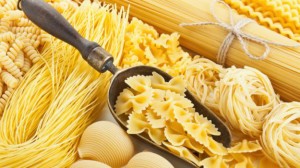 How to make Pasta in Business Scale? Sunpring will tell you the method. Since Pasta was first conceptualized, its demand has risen to levels that could never have been imagined, thanks to the latest manufacturing technologies that produce huge tones of high quality products. In Italy, Pasta is so loved that each individual is thought to eat more than sixty pounds of the product each year. On the other hand, Americans are the second largest consumers of Pasta in the world, with each American consuming about twenty pounds of the product every year. In other parts of the world, the consumption of Pasta is fairly high, with several varieties of commercially produced Pasta being sold in local supermarkets.
How to make Pasta in Business Scale? Sunpring will tell you the method. Since Pasta was first conceptualized, its demand has risen to levels that could never have been imagined, thanks to the latest manufacturing technologies that produce huge tones of high quality products. In Italy, Pasta is so loved that each individual is thought to eat more than sixty pounds of the product each year. On the other hand, Americans are the second largest consumers of Pasta in the world, with each American consuming about twenty pounds of the product every year. In other parts of the world, the consumption of Pasta is fairly high, with several varieties of commercially produced Pasta being sold in local supermarkets.
While hand-made Pastas are suitable for household consumption, the process involved is usually tiresome, insanitary, and unsustainable for large scale uses. Thus, most entrepreneurs prefer commercial made Pastas. In essence, commercial pastas differ from hand-made varieties in many ways.
Here is how Pasta is produced commercially:
Ingredients
Generally, wheat flour or semolina is the main ingredient in the production of fresh and dried Pasta, though recently some producers have introduced other grains such as rice, barley, buckwheat, maize, chestnut as well as chickpea and rye flours.
To meet the needs of persons affected by gluten-associated disorders such as gluten allergies, coeliac disease and gluten sensitivity, some Pasta recipes have introduced rice/maize in place of wheat.
Since most commercially produced Pastas are shipped to farther distances and stored for long periods, little or no perishables are added. In such cases, Pastas are dried thus the name ‘dried Pastas.’ For dried pastas, common additives may include vegetables purees such as tomato, spinach, herbs, cheeses, mushrooms, eggs as well spices and other seasonings. While most Pasta manufacturers do not add yeast products to their dough, there has been a steady increase in the number of yeast-made Pasta products.
Manufacturing Process
Basically, commercial production of Pasta involves the use of a production line known as Pasta extruder machine. This machine handles almost every aspect of production including grinding, mixing, cooking, drying, sterilization and packaging.
Mixing and Cooking
During the primary production process, the main ingredients are measured and added to a large container and mixed thoroughly in a mixing chamber. Later, the mixture is passed through a cooking chamber where heating is done. During the process, the mixture is heated under high temperature and pressure. After cooking, pellets of Pasta are forced out through a die. Depending on the type of Pasta extruder, different varieties of Pasta can be produced. In essence, dried Pastas can be short, long or minute.
Drying
At the drying stage, temperatures may be elevated to facilitate faster drying. In other cases, manufacturers may use low temperature techniques to facilitate drying. This technique may take a few days to some weeks depending on the manufacturer. Drying increases the shelf life of the final product.
Sterilization
Like in every food processing, sterilization is an important procedure in commercial Pasta making. Sterilization helps in eliminating contaminants such as bacteria and some fungi that may lower the shelf life of processed Pasta. Since most Pasta ingredients are sensitive to high sterilization temperatures, radiation is commonly used in the process. This new technique is safe and very efficient. Most commercial manufacturers have introduced the technique in production of dried pastas. However, it is important to note that low temperature long time sterilization technique (LTST) is also quite effective in Pasta Making. Some Pasta production lines use LTST.
Packaging
Finally, the dried Pasta is packaged in specific conditions of size, weight, hygiene and storage containers. Fresh Pasta is packed in a clean and airtight plastic container with a mixture of nitrogen and carbon dioxide that hinder microbial growth and lengthen the product`s storage life. On the other hand, dried Pastas are packed in cardboard containers.


Like in each sustenance preparing, sanitization is a vital method in business Pasta making. Cleansing aides in killing contaminants, for example, microorganisms and a few growths that may bring down the timeframe of realistic usability of prepared Pasta. Since most Pasta fixings are touchy to high disinfection temperatures, radiation is generally utilized as a part of the procedure. This new method is protected and extremely productive. Most business makers have presented the procedure underway of dried pastas. Notwithstanding, take note of that low temperature long time sanitization strategy (LTST) is additionally very compelling in Pasta Making. Some Pasta generation lines utilize LTST.